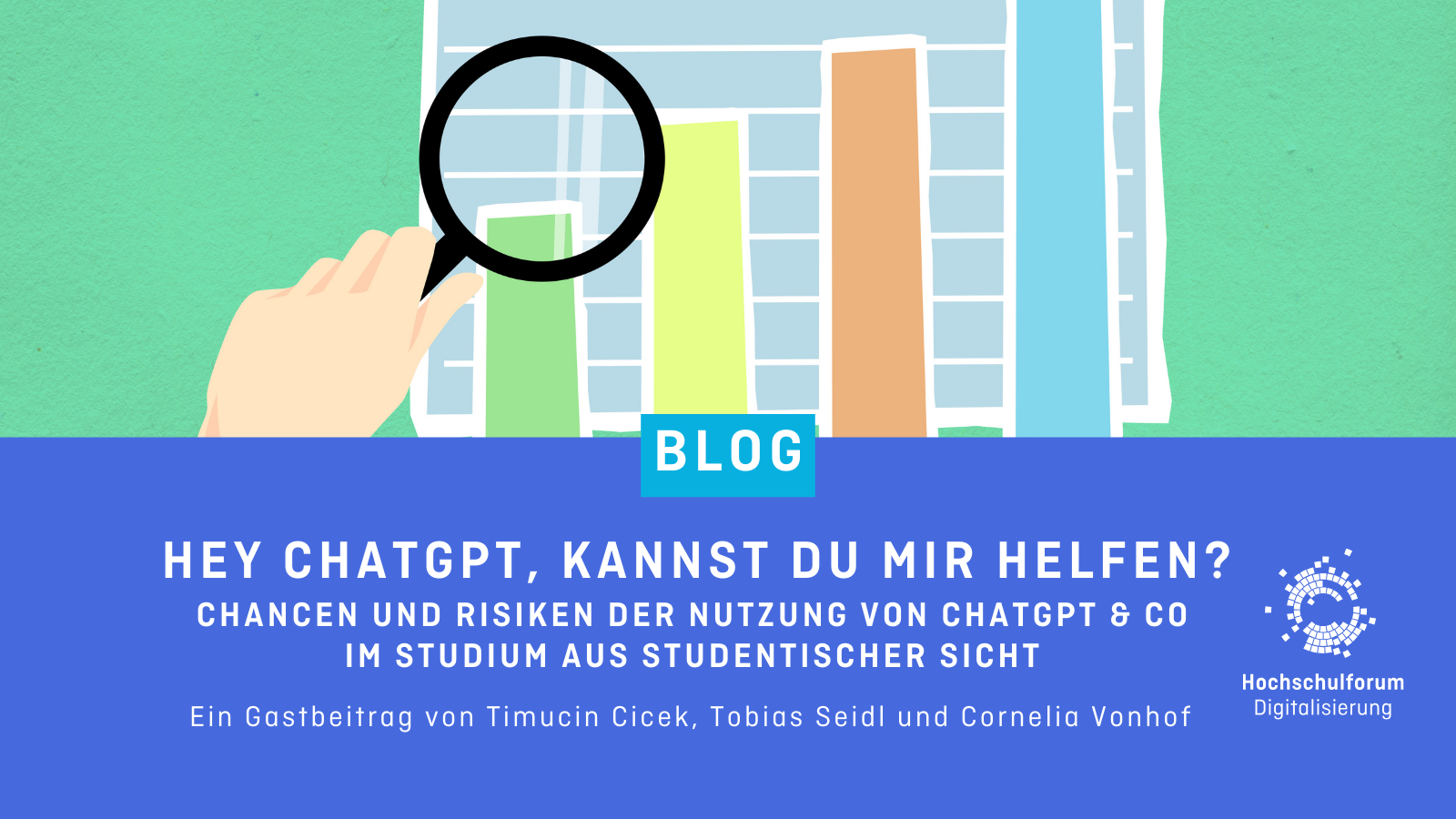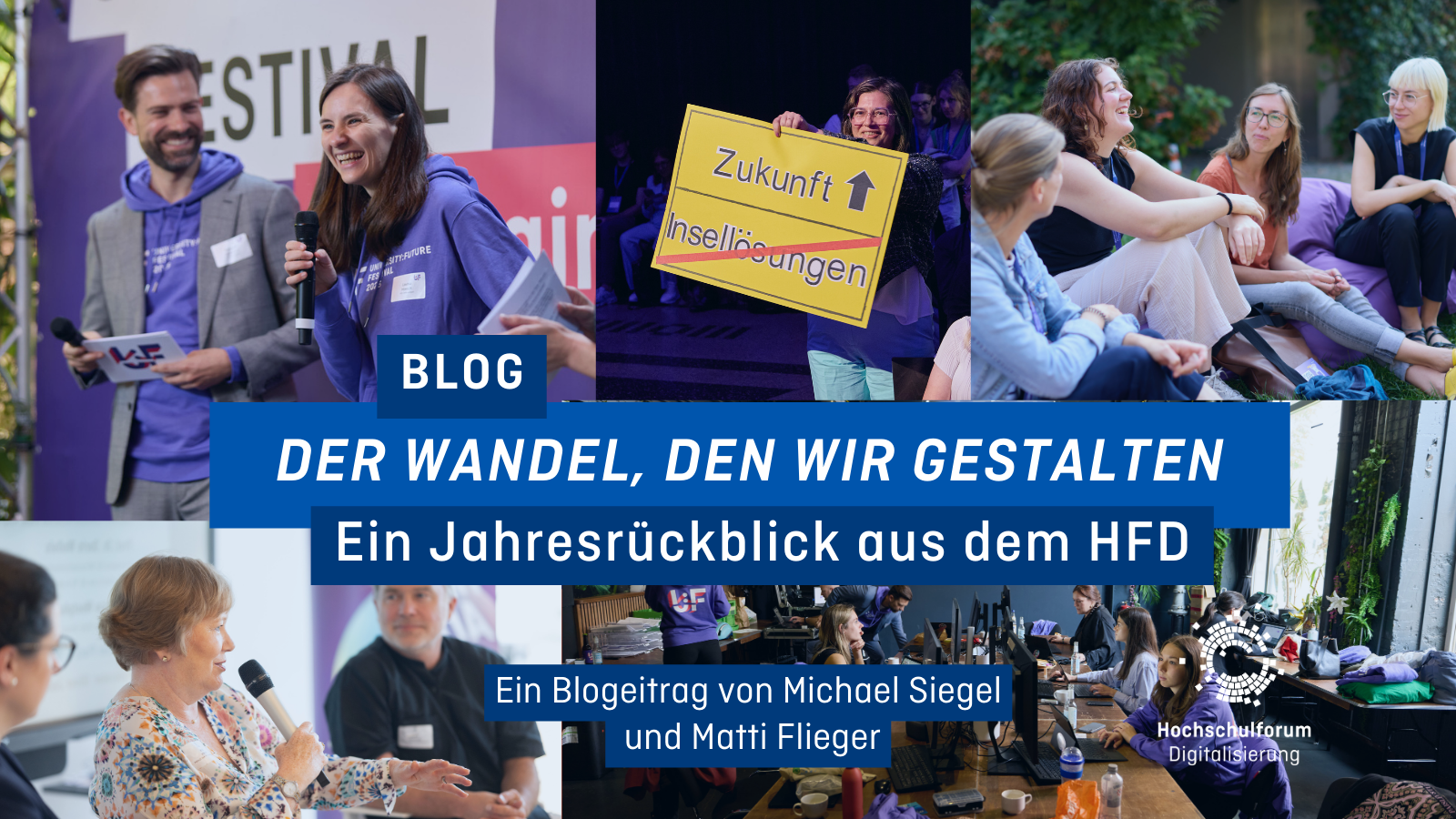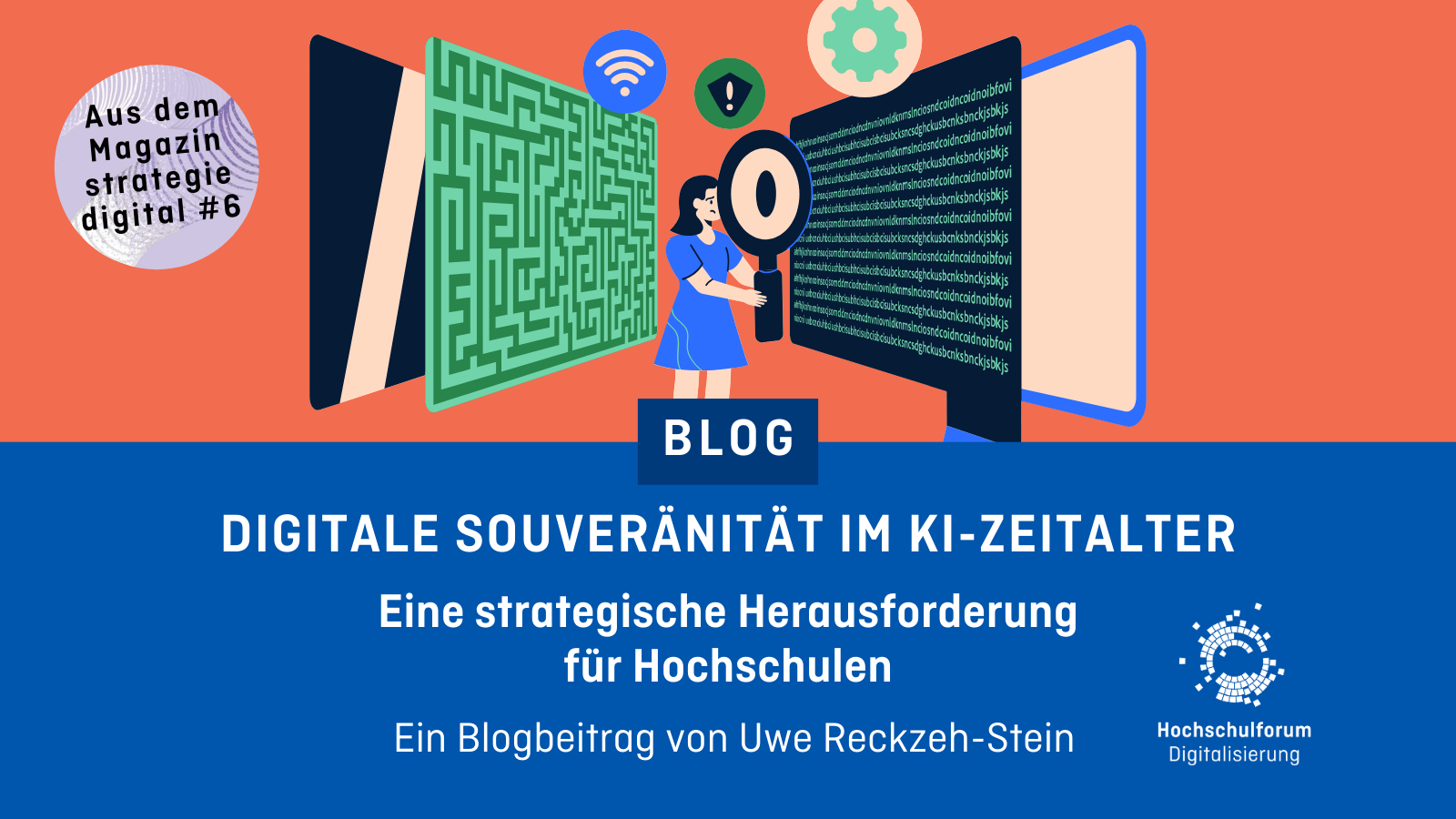Student use of AI tools in everyday university life: continuities and changes
Student use of AI tools in everyday university life: continuities and changes
09.09.24
Unfortunately, the student perspective is often neglected in the discussion about the use of AI tools at universities. But do students even want to use ChatGPT? What opportunities and risks do they see in the use of generative AI?
Last winter, Timucin Cicek, Prof. Dr. Tobias Seidl and Prof. Cornelia Vonhof from Stuttgart Media University published key findings from a student survey on the use of AI tools in the HFD blog post“Hey ChatGPT, can you help me?”. Now they continue with surprising answers to the question of what continuities and changes they observed.

Hey ChatGPT, kannst du mir helfen?
The use of AI by students has been changing the way students organize their everyday university life since November 2022 and the momentum of change continues unabated. This challenges us as teachers and the universities as institutions.
This is by no means just about the (fraud-proof) design of examinations, but above all about providing students with sound support in acquiring AI literacy and preparing them for a living and working environment shaped by AI. We can only master these challenges if we are familiar with student AI usage practices and the needs of the user group and regularly take this perspective into account. To this end, we conducted a survey among students at Stuttgart Media University (HdM) in May 2023, in which almost 12% of students took part (N=652) (Gottschling, Seidl, Vonhof 2024). How has the world changed since then? In order to make these changes and developments visible, a further survey was conducted one year later, in the summer semester of 2024, as part of a bachelor’s thesis, using a modified questionnaire. Almost 6% of the university’s students took part (N=319) (Renner 2024). The blog post presents key results and findings from this new survey, especially in comparison to the 2023 study.
1. student AI use continues to be widespread
The current survey shows that generative AI tools continue to be used by over 96% of students. There are no major changes here compared to the previous year. The same can be said for the intensity of use of AI tools: this also remains stable at a high level. In 2023, 11% of HdM students already use AI tools daily, 41.3% several times a week and 28.2% several times a month (Gottschling, Seidl, Vonhof 2024).
2. chatGPT continues to dominate usage
ChatGPT will remain the most widely used AI tool in 2024. Almost 94% of students use it. In terms of generative text AIs, Microsoft Copilot (15.3%), BingAI (11.7%) and Gemini (8.5%) follow in the usage statistics. Specialized search AI tools or similar do not play a role in usage (see Renner 2024). From this, a clear mandate for the design of introductory courses in academic work could be derived, namely to focus primarily on the specialized tools that support academic work.
A comparison of the results of the first survey with other studies available at the time shows that students at the HdM have a high affinity for AI. By 2023, over 50% of HdM students were already using AI tools daily or several times a week, while only 24% of students at the University of Hamburg, for example, used ChatGPT with corresponding frequency. The difference among non-users (1 % vs. 30 %) was even more significant (cf. Preiß et al., 2023). Despite this affinity , open source models such as Mistral or Llama have not yet played a role in the use of HdM students. Here, universities could engage in conscious agenda-setting in order to sensitize students to the advantages of such models.
3. The use in the context of examinations has increased significantly – but there is still a great deal of uncertainty on the part of students
The use of AI tools at the HdM for examinations increased significantly between 2023 and 2024 (from 33.7% to 62.9%). This change stands out clearly when looking at the data. At the same time, however, in the follow-up survey, students stated that they had only received guidelines on how to use AI tools in examinations in 37.5% of their courses on average. At the same time, 33.2% of students stated that they had little information and 11.9% no information at all about the legal aspects of exam use. These figures tend to be similar to the results of the 2023 survey.
There is therefore still a great need for action with regard to the definition and communication of clear rules for the use of AI tools in examinations. Student practice seems to have developed much more dynamically here than the actions of teachers.
It is therefore not surprising that over 82% of students in the current study would like to see guidelines on the use of generative AI at universities.
4. students do not yet perceive an increase in the demands of examinations across the board
The effects of generative text AI on exam design and assessment have already been discussed in detail among teachers. Especially when allowing the use of AI tools, the question arises to what extent expectations of performance need to be raised (e.g. with regard to the linguistic quality of the text) or other priorities need to be set. Just under 45% of students in the follow-up survey stated that they expect the use of AI tools to lead to an increase in the demands on examination performance in the future. However, only 19.1% of respondents have so far noticed an increase in demands or a tightening of corrections by teachers (Renner 2024).
The current survey reveals an interesting new finding with regard to students’ self-assessment: 37.8% state that they have received better grades through the use of generative AI without having achieved an appropriate level of performance in their own estimation. This makes us sit up and take notice and is an impetus for discussion among us teachers. In addition to changing the standards of correction, changing the form of examinations is also an effective way of reacting to the use of AI tools. For both aspects, a survey of teaching staff would be of great interest in order to understand the extent to which teaching and examination practice has already responded to the challenges posed by AI tools.
The current survey clearly shows that the use of AI tools among students continues to be widespread – as was to be expected – and has intensified in individual areas, again in line with expectations. The dominant role of ChatGPT and the increased use of AI in examinations underline the need for universities and university lecturers to take action. Clear guidelines and transparent communication are (finally) needed to regulate the use of AI at the university and to prepare students appropriately for a future shaped by AI. A typical feature of the development of AI tools to date is the high level of technical dynamism, which is constantly bringing with it new potential uses. For universities, this means that we all have to deal with the topic again and again: with regard to the design of our own teaching, but also with a research-based view of the actions of our students.
Sources:
Gottschling, S.; Seidl, T.; Vonhof, C. (2024). Nutzung von KI-Tools durch Studierende. Eine exemplarische Untersuchung studentischer Nutzungsszenarien. die hochschullehre. Interdisziplinäre Zeitschrift für Hochschule und Lehre. 10(11). https://dx.doi.org/10.3278/HSL2411W.
Preiß, J.; Bartels, M.; Niemann-Lenz, J.; Pawlowski, J.; Schnapp, K.-U. (2023). ChatGPT and Me. Erste Ergebnisse der quantitativen Auswertung einer Umfrage über die Lebensrealität mit generativer KI an der Universität Hamburg. Digital and Data Literacy in Teaching Lab. Universität Hamburg. http://doi.org/10.25592/uhhfdm.13403.
Renner, B. (2024). Analyse des Nutzungsverhaltens generativer KI-Tools von Studierenden an der Hochschule der Medien Stuttgart: Eine empirische Untersuchung. Bachelorarbeit (unveröffentlicht).
Author:

Dr. Tobias Seidl is professor for key and personal competencies of students at the Stuttgart Media University. His teaching and research interests include creativity and innovation, leadership, communication, and higher education didactics. He is currently the Associate Dean of the Faculty of Information and Communication and Chair of the Faculty Audit Committee. He tweets under @drseidlt.

Prof. Cornelia Vonhof is Professor of Public Management in the Information Sciences course at Stuttgart Media University. Her work focuses on management tools in libraries and information institutions, in particular quality management and organizational development. quality management and organizational development. She is head of the contact and master’s degree program in Library and Information Management and is an active author and editor.


 Michael Siegel
Michael Siegel 
 Andreas Giesbert
Andreas Giesbert 
 Uwe Reckzeh-Stein
Uwe Reckzeh-Stein 